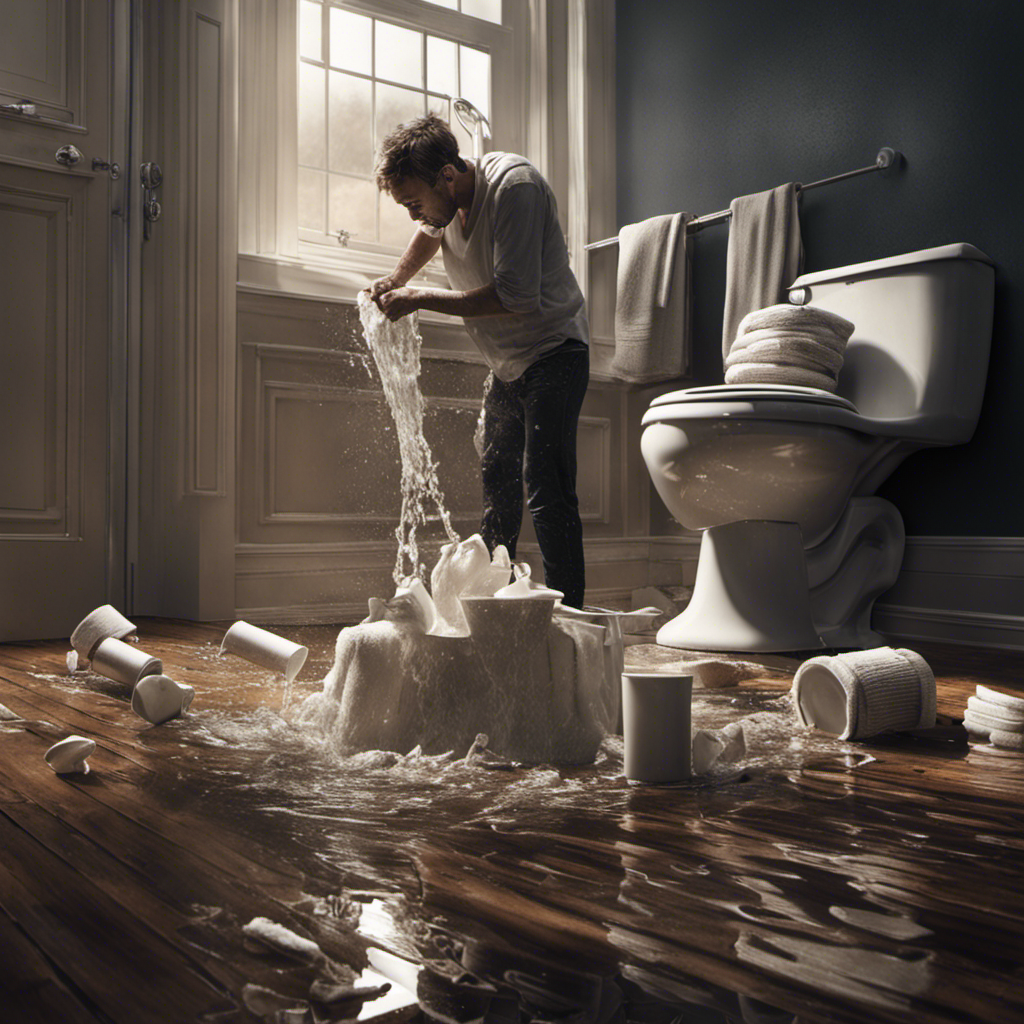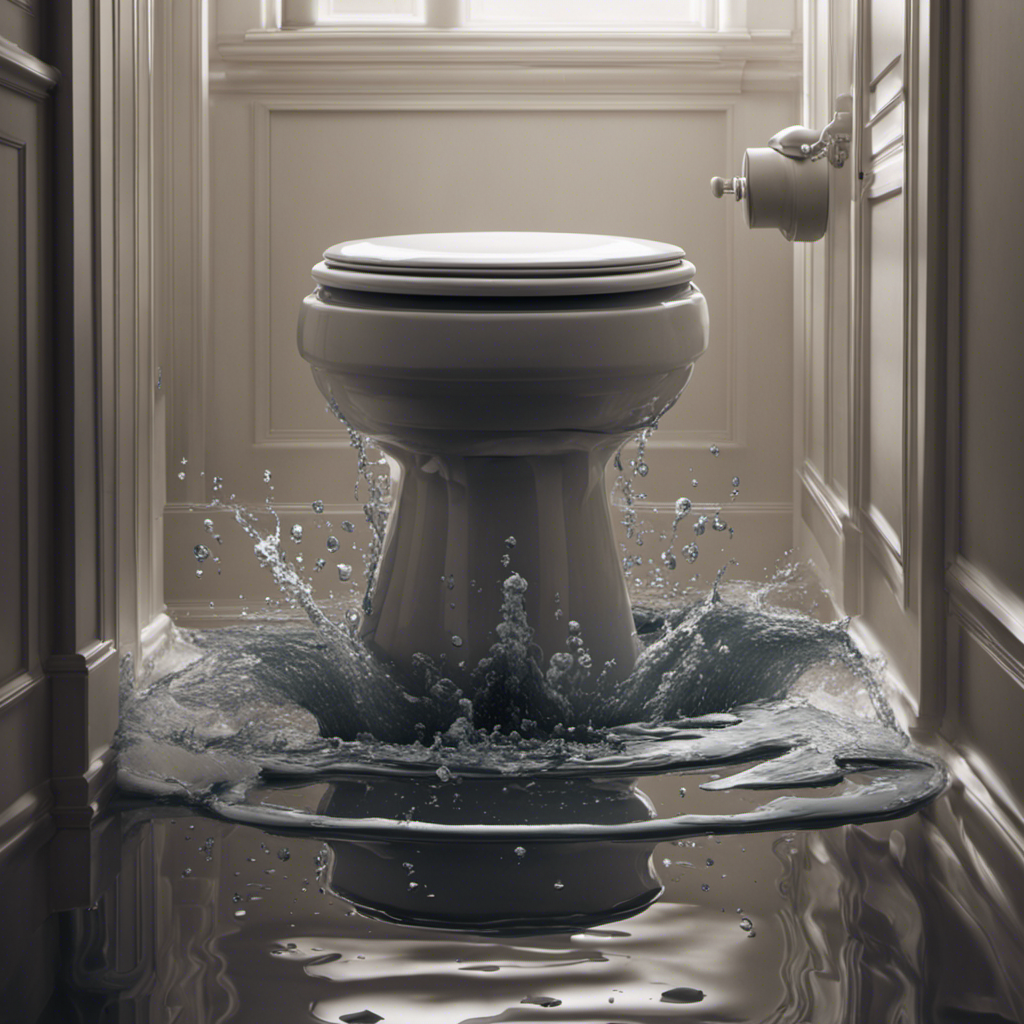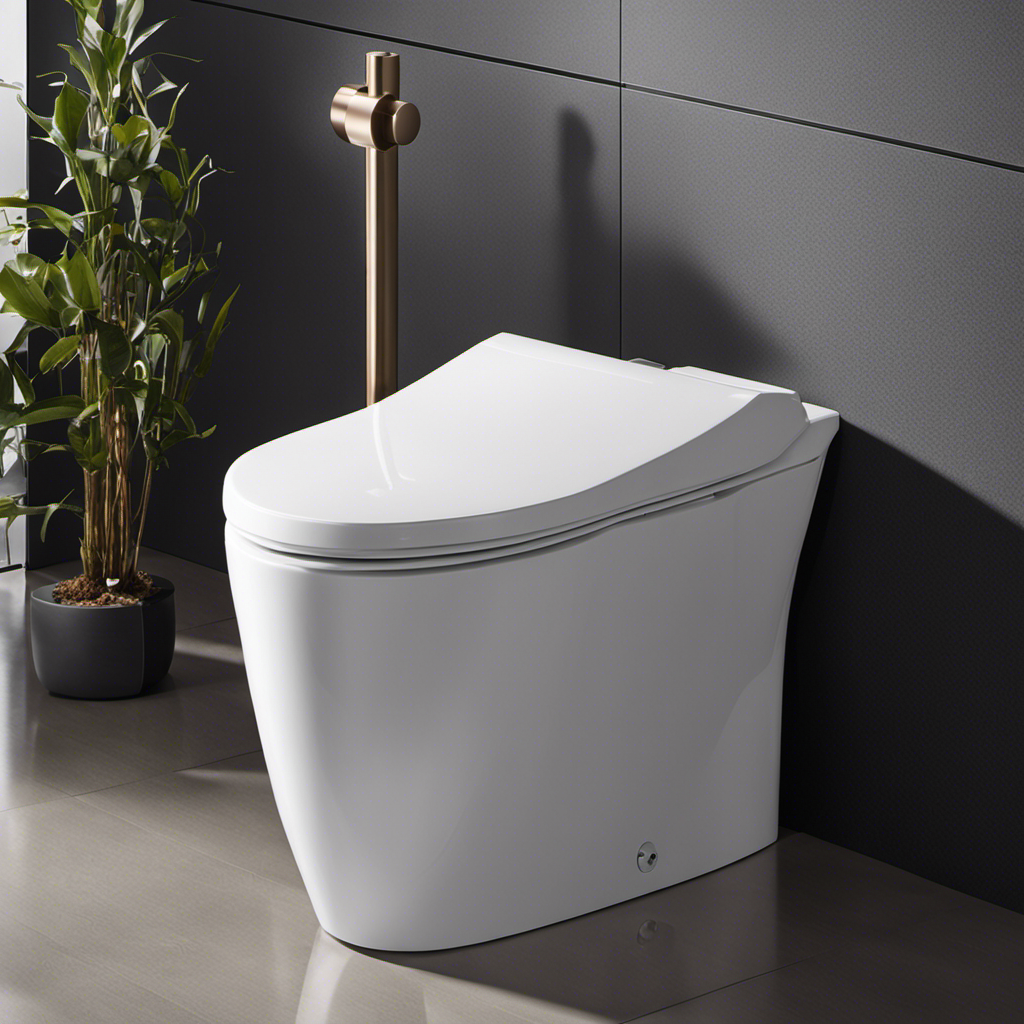Did you know that over 70% of households experience a toilet overflow at some point? When it happens to you, it can be a messy and stressful situation.
But fear not! This article will guide you through the steps to stop the overflow, safely clean up the mess, and even give you some maintenance tips to prevent future overflows.
So, next time your toilet decides to go haywire, you’ll be prepared to handle the situation like a pro.
Key Takeaways
- Shut off the water supply valve behind the toilet to stop the overflow.
- Plunge the toilet using a plunger to clear any blockage.
- If the problem persists, call a professional plumber.
- Gather necessary cleaning supplies and safely clean up the mess.
Causes of Toilet Overflow
You need to know what causes your toilet to overflow so you can prevent it from happening again.
One common cause is toilet clogs. When too much toilet paper or other debris builds up in the pipes, it can block the flow of water and cause the toilet to overflow.
Another factor to consider is water pressure. If the water pressure in your plumbing system is too high, it can put too much force on the toilet, leading to overflow.
To prevent toilet clogs, make sure to only flush toilet paper and waste. Avoid flushing items like feminine hygiene products or baby wipes, as these can easily cause blockages.
Additionally, you can install a pressure reducing valve to regulate the water pressure in your plumbing system and prevent overflow.
Steps to Stop the Overflow
To stop the overflow, simply turn off the water supply valve behind the toilet. This is the quickest and most effective way to prevent further flooding in your bathroom. Many people panic when faced with an overflowing toilet and make common mistakes that worsen the situation. By following these DIY solutions, you can avoid any unnecessary damage and resolve the issue quickly.
| Steps to Stop the Overflow |
|---|
| 1. Locate the water supply valve behind the toilet. |
| 2. Turn the valve clockwise to shut off the water flow. |
| 3. Lift the toilet tank lid and adjust the float if necessary. |
| 4. Plunge the toilet using a plunger to clear any blockage. |
| 5. If the problem persists, call a professional plumber. |
How to Safely Clean Up the Mess
When a toilet overflows, it’s crucial to safely clean up the mess to avoid any further damage or health hazards.
The first step is to gather the necessary cleaning supplies, such as rubber gloves, a mop, a bucket, disinfectant cleaner, and paper towels. Put on your gloves before starting the cleanup process.
Begin by using the mop to remove as much water as possible from the floor. Dispose of the dirty water in a toilet or drain.
Next, use the disinfectant cleaner to thoroughly clean the affected area, including the floor, walls, and any other surfaces that came into contact with the overflow. Be sure to follow the instructions on the cleaner for proper sanitizing techniques.
Once everything is clean, dry the area with paper towels and dispose of them in a plastic bag. Remember to wash your hands thoroughly after completing the cleanup.
Preventing Future Overflows: Maintenance Tips
Regular maintenance is essential for preventing future toilet overflow incidents. By following these simple tips, you can keep your toilet running smoothly and avoid messy situations:
-
Check the water level: Ensure that the water level in the tank is not too high or too low. Adjust the float or fill valve if needed.
-
Inspect the flapper: The flapper is a rubber valve that controls the water flow from the tank to the bowl. Make sure it is in good condition and seals properly.
-
Clean the jets and siphon holes: Over time, mineral deposits and debris can clog these small openings, causing poor flushing. Use a wire hanger or a small brush to clear any blockages.
-
Test the flush handle: If the handle feels loose or doesn’t flush properly, it may need adjusting or replacing.
By regularly maintaining your toilet, you can minimize the risk of overflow incidents and avoid costly repairs.
However, there are times when it’s best to call a professional plumber for help.
When to Call a Professional Plumber
If you’re experiencing persistent issues with your toilet, it might be a good idea to consult a professional plumber. While some common toilet problems can be fixed with simple DIY solutions, there are times when calling a professional is necessary.
Signs of a plumbing emergency include a toilet that won’t stop running, a toilet that won’t flush, or a toilet that is leaking. These issues can indicate more serious underlying problems such as a faulty flapper valve, a clogged drain, or a damaged sewer line.
A professional plumber will have the necessary tools and expertise to diagnose and fix the problem effectively. They can also provide advice on proper maintenance to prevent future issues.
Don’t hesitate to call a professional when faced with persistent toilet problems or signs of a plumbing emergency.
Conclusion
In conclusion, when your toilet overflows, it can be a messy and stressful situation. But fear not, there are steps you can take to stop the overflow and safely clean up the mess.
Remember, prevention is key, so make sure to maintain your toilet properly to avoid future mishaps.
If all else fails, don’t hesitate to call a professional plumber for assistance. Just like a knight in shining armor, they will come to your rescue and restore peace and order to your bathroom kingdom.
Stay calm and tackle the overflow with confidence!










